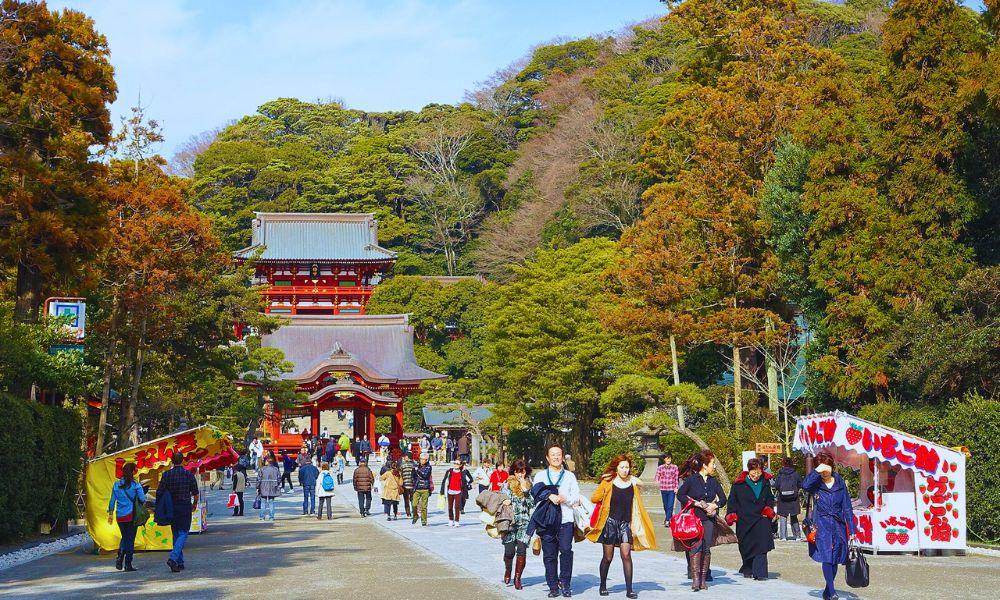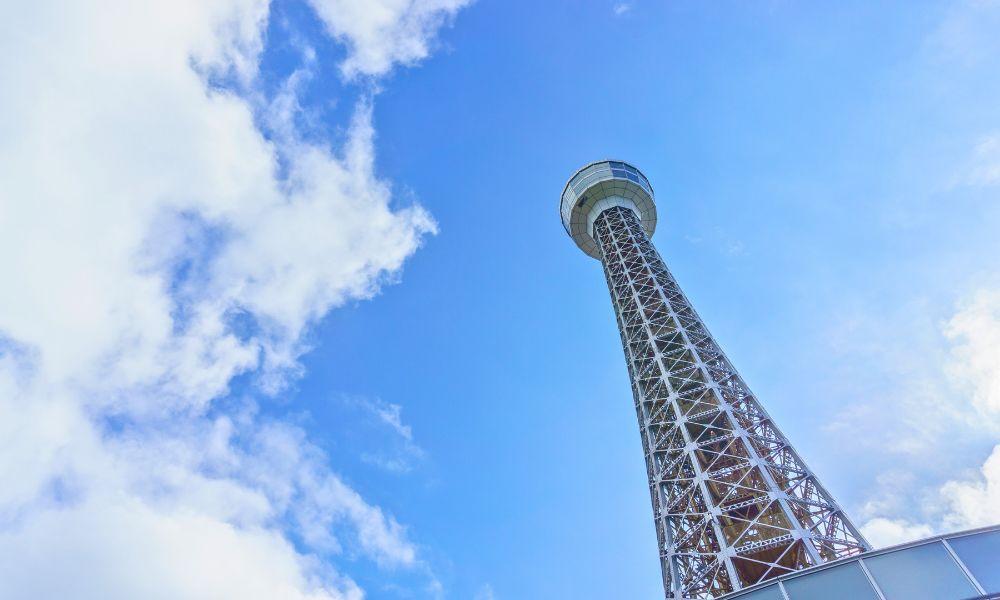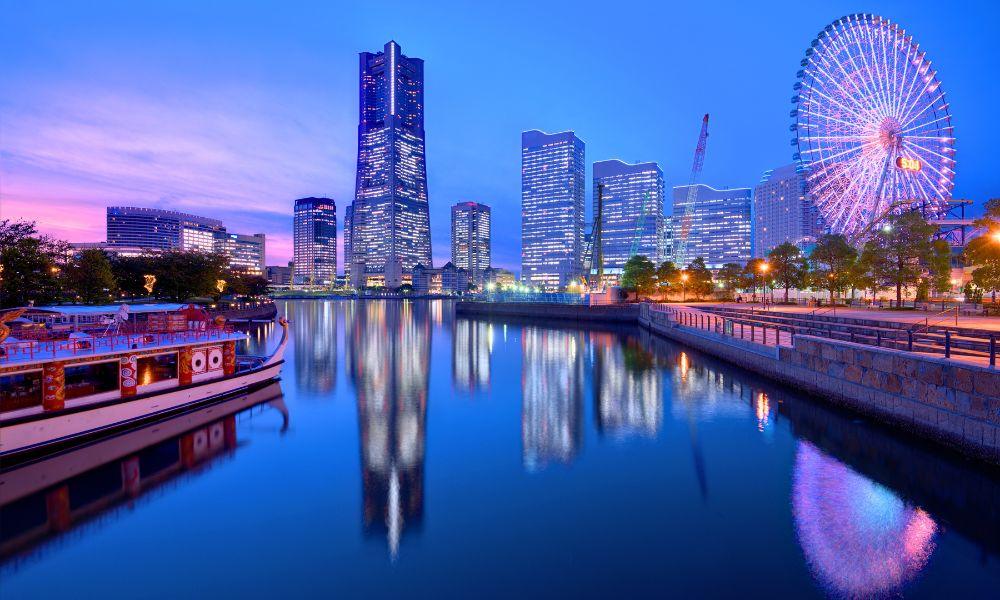If you’re anything like me, you’re constantly searching for travel experiences that feel authentic and new. I love Japan, but after a few trips, I was craving an adventure beyond the “Golden Route” crowds. I wanted open roads, stunning nature, and incredible food. That search led me to Tohoku, Japan’s beautiful and often-overlooked northeastern region.
This is the exact 3-day road trip itinerary from our incredible adventure, focusing on the prefectures of Miyagi and southern Iwate. It was the perfect introduction to the region, packed with unforgettable moments. It’s too good not to share.
So, here it is. Feel free to steal this on your next Japan road trip!
Day 1: Coastal Wonders and Samurai Legends
We hit the road early from Tokyo. The drive north is part of the fun, watching the skyscrapers melt away into lush, green countryside. Our destination for the day: Matsushima Bay, one of Japan’s official “Three Great Views,” and it did not disappoint.
Stop 1: The Matsushima Bay Cruise
Seeing those 260-ish pine-covered islands appear as you drive into town is a “wow” moment. The best way to see them properly is to get out on the water.
What it’s like: We hopped on a ferry cruise that weaves through the bay. It’s so peaceful out on the water, getting up close to the uniquely shaped islands, many of which have their own names and legends. The sea breeze, the sound of the waves, and the incredible views make for a perfect start to the trip.
- A Little History: The famous 17th-century haiku poet, Matsuo Basho, was supposedly so stunned by the beauty of Matsushima that he was at a loss for words, unable to compose a poem for it—a legendary testament to its beauty.
- Know Before You Go:
- Price: Around ¥1,500 per adult for a standard 50-minute cruise. (Prices can change, so it’s always smart to check the official ferry company’s website for current pricing).
- Hours: Typically 9:00 AM to 4:00 PM. (Hours can vary by season, so a quick online check beforehand is recommended).
Evening: Fresh Oysters & Seaside Views
After the cruise, we explored the town a bit. You can’t leave Matsushima without trying the seafood, especially the oysters. They’re famous here. We found a small waterfront restaurant and had them grilled fresh. So good! After dinner, we headed to our hotel in the Sendai area to get ready for a packed Day 2.
Day 2: City Views, Samurai Feasts & A Golden Surprise
Day two was a whirlwind of city culture, legendary food, and a trip back in time to the golden age of the samurai.
Stop 1: Sendai Castle Ruins (Aoba Castle)
First thing in the morning, we drove up to the Aoba Castle ruins. Perched on a hill, it offers the best panoramic view of Sendai city sprawling below.
What it’s like: While the main castle keep is gone, the impressive stone walls and the site itself are amazing to see. The real star is the massive equestrian statue of the city’s founder, Date Masamune. It’s an iconic photo spot.
- A Little History: Date Masamune was a formidable feudal lord known as the “Ōshū no Dokuganryū” (the “One-Eyed Dragon of Oshu”). He lost sight in one eye to smallpox as a child but went on to become one of the most powerful and influential rulers of his time.
- Know Before You Go:
- Price: The main castle grounds are free to enter. The on-site museum (Aoba Castle Museum) has an entrance fee of around ¥700 (confirm the latest price online).
- Hours: The grounds are always open, but the museum is typically 9:00 AM to 4:00 PM (always check the official site for any changes to hours).
Wanna read more about historical Japanese shrines and temples? Check out this post on historic Kamakura:
Stop 2: The Legendary Gyutan Lunch
Next, we headed downtown for the meal Sendai is most famous for: gyutan (grilled beef tongue). Trust me on this, even if you’re hesitant, you have to try it.
What it’s like: A gyutan set meal is a whole experience. Before our trip, I researched heavily, and these three places consistently came up as the top-tier, must-try spots:
- Rikyu (利久): A very popular and reliable choice known for high-quality, thick-cut gyutan. A great bet for first-timers.
- Katsugyu (閣の牛): Praised by locals for its seriously meaty, satisfying portions and rich flavor.
- Tasuke (太助): Considered one of the original gyutan shops, offering a more traditional, old-school experience.
Expect to pay around ¥2,500 for a quality set lunch, though prices vary. After our amazing meal, we grabbed a Zunda Shake (a sweet edamame milkshake, another Sendai specialty) for the road.
Stop 3: Chuson-ji Temple & The Golden Hall
Fueled up, we drove about 1.5 hours north into Iwate Prefecture to the town of Hiraizumi. Our destination was the Chuson-ji Temple, a UNESCO World Heritage site.
What it’s like: Walking through the serene, forested grounds feels like stepping into another world. But the real showstopper is the Konjiki-do (Golden Hall). Pictures truly don’t do it justice. It’s an entire building, inside and out, covered in gold leaf and shimmering mother-of-pearl, protected from the elements inside another, larger hall.
- A Little History: In the 12th century, the Oshu Fujiwara clan ruled this region and built Hiraizumi to rival Kyoto in splendor and political power, envisioning it as a “Buddhist Pure Land” on Earth.
- Know Before You Go:
- Price: Around ¥1,000 per adult for the combined ticket which includes the Golden Hall. (It’s always best to check their official site for the latest fee).
- Hours: Typically 8:30 AM to 5:00 PM (note that closing times are often earlier in winter, so always double-check!).
Day 3: A Peaceful Gorge & The Journey Home
For our last day, we wanted one more dose of Tohoku’s nature before the long drive back.
Stop 1: Geibikei Gorge Boat Ride
A short drive from Hiraizumi is the stunning Geibikei Gorge.
What it’s like: You explore this gorge on a traditional flat-bottomed boat. A boatman guides you down the calm river using only a long bamboo pole while singing old folk songs that echo off the canyon walls. At one point, you can even buy “luck stones” (undama) to try and throw into a small hole in the cliff face for good luck!
- Know Before You Go:
- Price: Around ¥2,000 per adult for the 90-minute round trip. (Confirm current prices on their official website before your visit).
- Hours: Boats usually run from 8:30 AM to around 4:00 PM. (This can change with the season and weather, so a quick online check is highly recommended).
After the boat ride, we started the long but scenic drive back to Tokyo, stopping at a michi-no-eki (roadside station) for last-minute snacks and souvenirs.
Why You Should Take This Tohoku Trip
This 3-day road trip was the perfect introduction to the beauty and history of Tohoku. It offers a powerful blend of Japan’s world-famous efficiency and its deep, natural soul. Escaping the crowds allowed us to connect more with the places we visited and the people we met. If you’re looking for an adventure that feels both grand and personal, I can’t recommend this route enough. It left us wanting to come back and see what other secrets Tohoku holds.
Oh, and the boatman also sings!
Tohoku Roadtrip Itinerary Frequently Asked Questions
- What is the best time of year to do this road trip?
- A: Honestly, any season! Spring (April-May) has cherry blossoms. Summer (July-Aug) is lush and green with many festivals. Autumn (Oct-Nov) is world-famous for its spectacular fall colors. Winter (Dec-Feb) offers serene snowscapes, but requires a car with snow tires. Autumn is often considered the most scenic.
- How much should I budget for this 3-day trip?
- A: Excluding car rental and gas, a rough estimate per person would be ¥30,000 – ¥45,000. This covers accommodation (budget-to-mid-range), food, and all the entrance fees listed above.
- Is driving in Tohoku difficult?
- Not at all! The expressways are modern and well-maintained. The rural roads are generally quiet and easy to navigate. Just be mindful that roads can be narrower than you’re used to. An International Driving Permit is required for most non-residents.
- Can I do this trip without a car?
- It would be challenging but possible. You could use the Shinkansen (bullet train) to get from Tokyo to Sendai, then use local trains and buses. However, getting to places like Geibikei Gorge would be much more time-consuming. A car offers far more freedom for this specific itinerary.


















